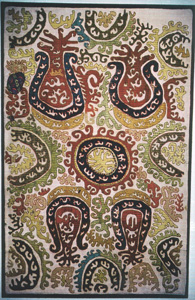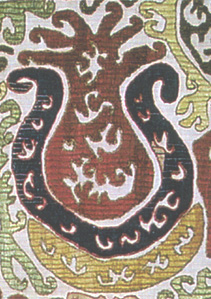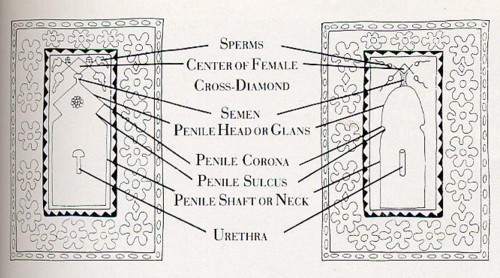Following are two images (overall and detail) of a Kaitag embroidery that will likely be exhibited here in Washington during the ICOC in April of 2003. The piece is, I believe, previously unpublished.


Note that the palmettes are of the "open" variety, in which the field color extends into the body of the palmette, much as in the case of the Italian palmette. We also see, in yellow at the base of each palmette, a crescent shape that may be a version of the bar on the Lenkorans or the bands from the dragon carpets. It at least vaguely resembles the serrated pendant on the Italian palmette.
Wendel


 , with an atomic engine in the middle of it and radio waves emanating from
the top. This iconography predates the space age, meaning that we have
been visited by creatures from outer space, including "The Pods" of the
Kaitags. They brought Simurghs, dragons and some sort of magical cloudband
fungus.
, with an atomic engine in the middle of it and radio waves emanating from
the top. This iconography predates the space age, meaning that we have
been visited by creatures from outer space, including "The Pods" of the
Kaitags. They brought Simurghs, dragons and some sort of magical cloudband
fungus. .
.